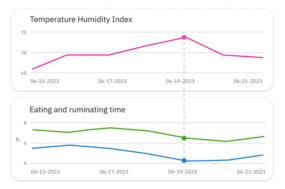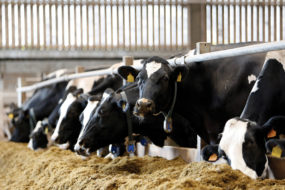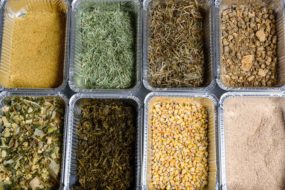How the dairy industry could benefit from a price stabilization plan “The volatility in dairy product prices and dairy producer milk prices is extremely difficult for dairy producers, milk processors and end users of milk and dairy products to manage,” the Holstein Association USA, Inc. (HAUSA) says in their Dairy Price Stabilization Program outline.
“The U.S. All Milk price averaged $15.13 for 2005, just $12.88 for 2006, a record high of $19.13 for 2007 and $18.32 for 2008, the second highest on record. But, the U.S. All Milk price was a record monthly high of $21.90 November of 2007, started 2008 with a January price of $20.50 only to fall to $15.60 by December and down to $11.50 for February 2009. Such volatility creates major problems for dairy producers to manage cash flow and make capital investment decisions. When prices are at their lows, returns over feed costs become unfavorable and even negative. These unfavorable returns have a negative impact beyond the dairy producer level. Farm input suppliers are negatively impacted as dairy producers reduce their purchases of feed, seed, fertilizer, crop chemicals, machinery and other inputs. These lower input purchases negatively impact local businesses and communities.”
The program developers hope to prevent severely depressed producer milk prices, reduce the volatility of dairy product prices and producer milk prices and thereby reduce the price risk to dairy producers. They also would provide flexibility in allowing dairy producers who wish to expand their dairy operations as well as providing for new producers who wish to enter dairying. The HAUSA program would complement and not replace other existing dairy programs, such as the Federal dairy price support program and the Milk Income Loss Contract program. The program developers suggest the program run for seven years with a review of its effectiveness at 5 years.
The program being proposed will be mandatory in all states but would allow state-run initiatives to proceed as planned if passed before the program is made into legislation.
Any producers that expand beyond the percentage of expansion decided on by the Secretary of Agriculture and the “board” will have to pay a fee and the fee will be distributed to the farmers that stayed within the established parameters. PD
—Compiled by PD staff
Why supply management could hurt farmers more than help them
The quota system may put producers across the country on the same percentage of growth, but that doesn’t mean all will be equal. Bob Lefebvre, Executive Director of the Minnesota Milk Producers Association, was quoted by Agriview on July 30, 2009 as being troubled with discussions about supply management being the solution to our current situation.
“The supply management proposal by Holstein USA and Western United Dairymen, as it sits, would lock in Western dairy producers’ competitive advantages while substantially cutting off Minnesota dairy farmers’ ability to compete,” said Lefebvre in an e-mail with Agriview Dairy Editor Ron Johnson. “The result is a less-sustainable dairy industry where cows continue to be milked in the desert, with feed being shipped in and where economies of scale have been achieved.
“Consider a 10,000-cow dairy in California or New Mexico or Texas,” he continues. “Under the Holstein Association plan, the Western herd could expand by 200 cows without any penalty the next year, if the ‘board’ sets 2 percent as the allowable increase. At 1,000 cows, (a farm) is adding 20 cows. This supply control plan only allows those who are large to get larger in a manner that allows them to take advantage of their scale.”
Another study commissioned by Western United Dairymen (www.westernuniteddairymen.com/content/view/49/59/) also outlines some flaws.
Tina L. Saitone and Richard J. Sexton stated that if the U.S. sets up an arbitrary price for milk that isn’t at or below the world value for milk, the U.S. will start to import more milk and export much less. If the U.S. has to consume all its milk because it is too expensive to export, the U.S. dairy industry will again flood the market.
“There is presently no mechanism to sustain U.S. exports if U.S. prices became noncompetitive,” Saitone and Sexton said in their report. “Export subsidies could possibly play such a role, but they would have to be sufficient in magnitude to make up for the decrease in the world price relative to the domestic price. The USDA presently operates a small Dairy Export Incentive Program designed to counteract subsidized exports from other countries. The scale of this program is severely limited by U.S. commitments under the World Trade Organization.” PD
—Compiled by PD staff
Click here to read producers' opinions on the PD Poll: Should any growth management plan include a market access fee on all of the milk produced or just for the new milk produced? What should that price be?






